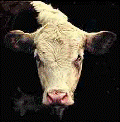Animal Science, Department of
First Advisor
Galen E. Erickson
Second Advisor
James C. MacDonald
Date of this Version
Summer 7-28-2023
Document Type
Article
Citation
Suarez-Lorences et al. (2023)
Abstract
A feedlot trial (Exp. 1) was conducted to evaluate the impact of removing modified distillers grains plus solubles (MDGS) on performance and carcass characteristics. Cattle with MDGS removed on either d 79 or d 43 had reduced final BW, DMI, and ADG. Cattle with MDGS removed on d 43 were 5% less efficient than cattle fed 20% MDGS throughout the entire 124-d feeding period. Cattle fed 20% MDGS throughout the whole feeding had the greatest HCW and LM area. There were no differences in backfat and marbling scores among treatments, and no differences in percent of abscessed livers. In conclusion, removing MDGS from finishing diets had a negative impact on cattle performance compared with feeding 20% MDGS continuously throughout the entire finishing period.
In addition, another feedlot trial (Exp.2) and a metabolism trial (Exp.3) were conducted to evaluate the effect of 0%, 15%, or decreasing inclusions (30-15-0%) of MDGS with high- or low-quality roughage on ruminal pH, rumination behavior, and finishing cattle performance, and carcass characteristics. In Exp. 2 there was an interaction between roughage source and MDGS inclusion observed for DMI. No other significant interactions were observed. Cattle fed the diet with 0% MDGS inclusion had reduced HCW, DMI, ADG and 12th rib fat thickness, and poorer G:F compared to cattle fed diets containing MDGS. Cattle fed decreasing inclusions of MDGS (30-15-0%) had lower DMI, ADG and tended to have lighter HCW compared to cattle fed 15% continuously; however, G:F was not affected compared to when distillers was fed at 15% continuously. Cattle fed 15% MDGS had greater marbling score than 0% inclusion and tended to be greater than cattle fed 30-15-0% MDGS. Cattle fed 12% silage consumed less, gained the same, and had greater G:F than cattle fed 6% stalks. These data suggest that feeding 15% distillers was not enough to offset lower quality roughage (stalks) compared to silage as roughage source. In Exp.3 an interaction between roughage source and MDGS inclusion was observed for pH magnitude, pH variance, and DMI. Cattle fed 0% or 15% MDGS with either corn silage or corn stalks had similar average rumen pH. Cattle fed corn stalks had greater maximum and minimum rumen pH. No significant differences were observed for rumination behaviors. In conclusion, smaXtec pH probes and CowManager animal behavior tags need further validation for cattle fed high-concentrate diets.
Advisor: Galen Erickson and James MacDonald



Comments
A THESIS Presented to the Faculty of The Graduate College at the University of Nebraska In Partial Fulfillment of Requirements For the Degree of Master of Science, Major: Animal Science, Under the Supervision of Professor Galen E. Erickson and James C. MacDonald. Lincoln, Nebraska: August 2023
Copyright © 2023 Sofia Suarez-Lorences